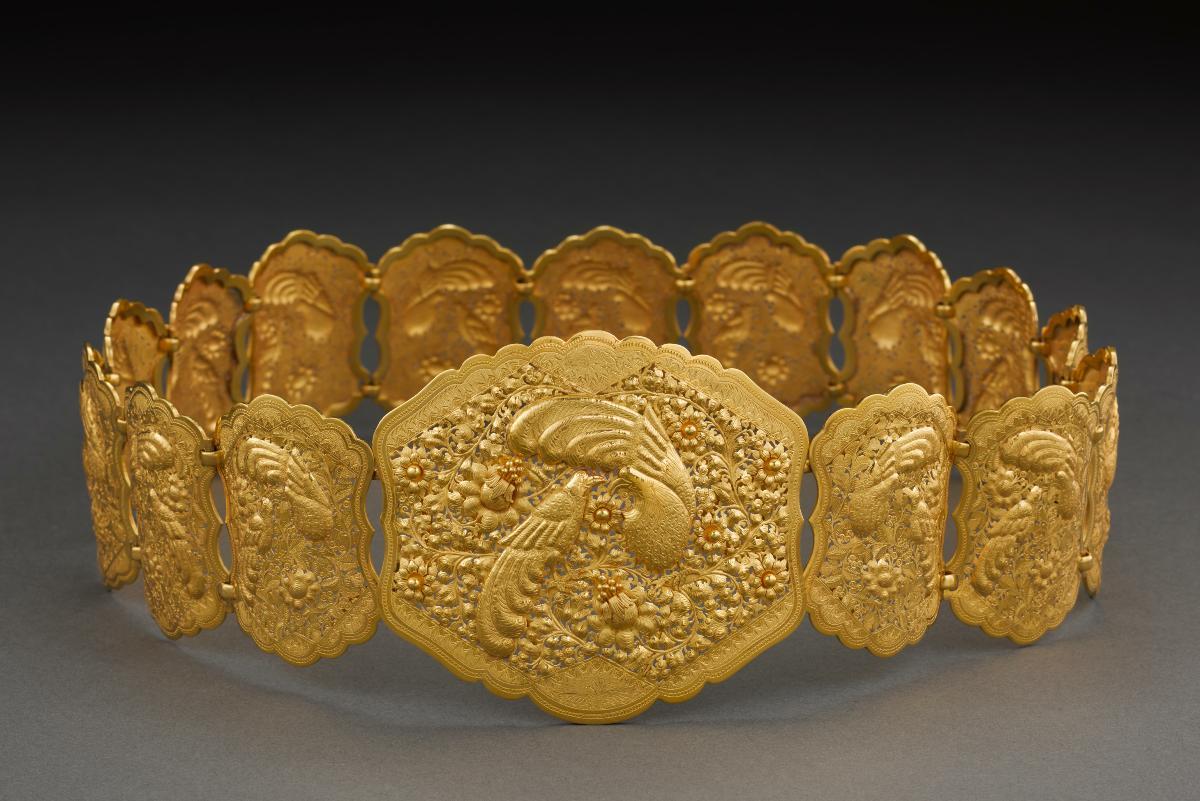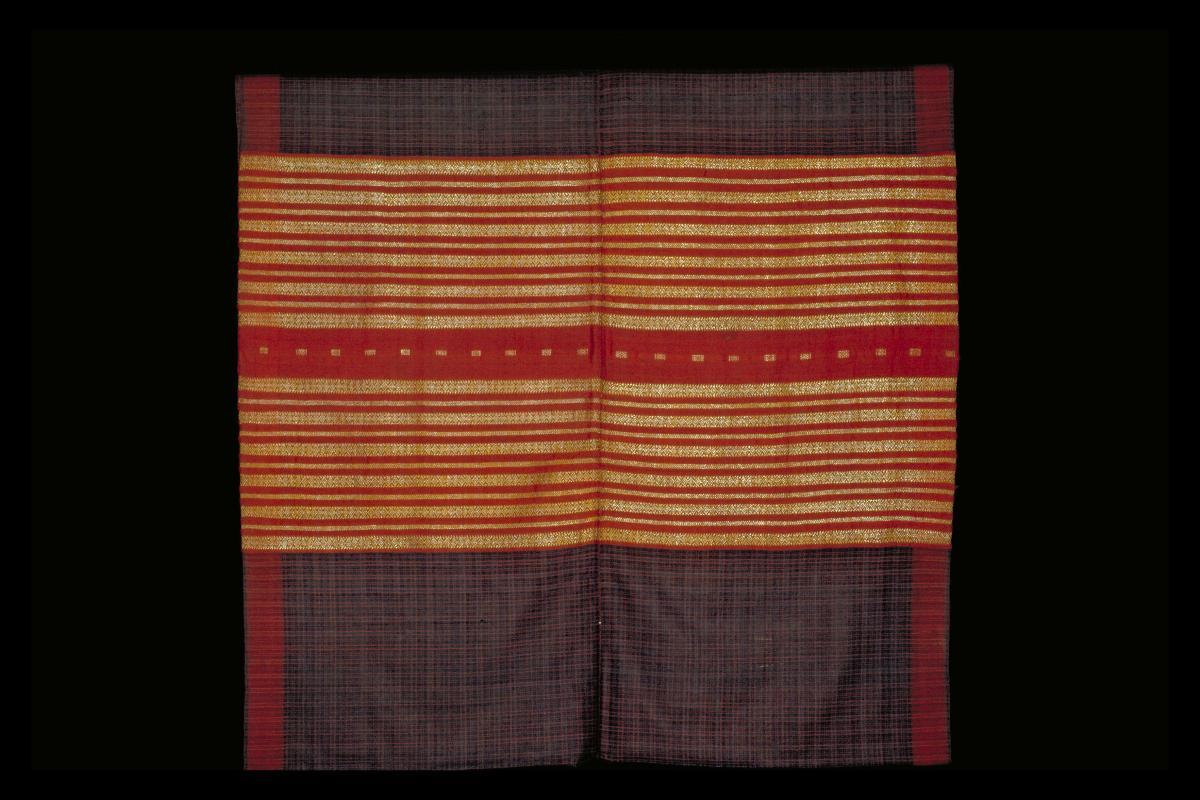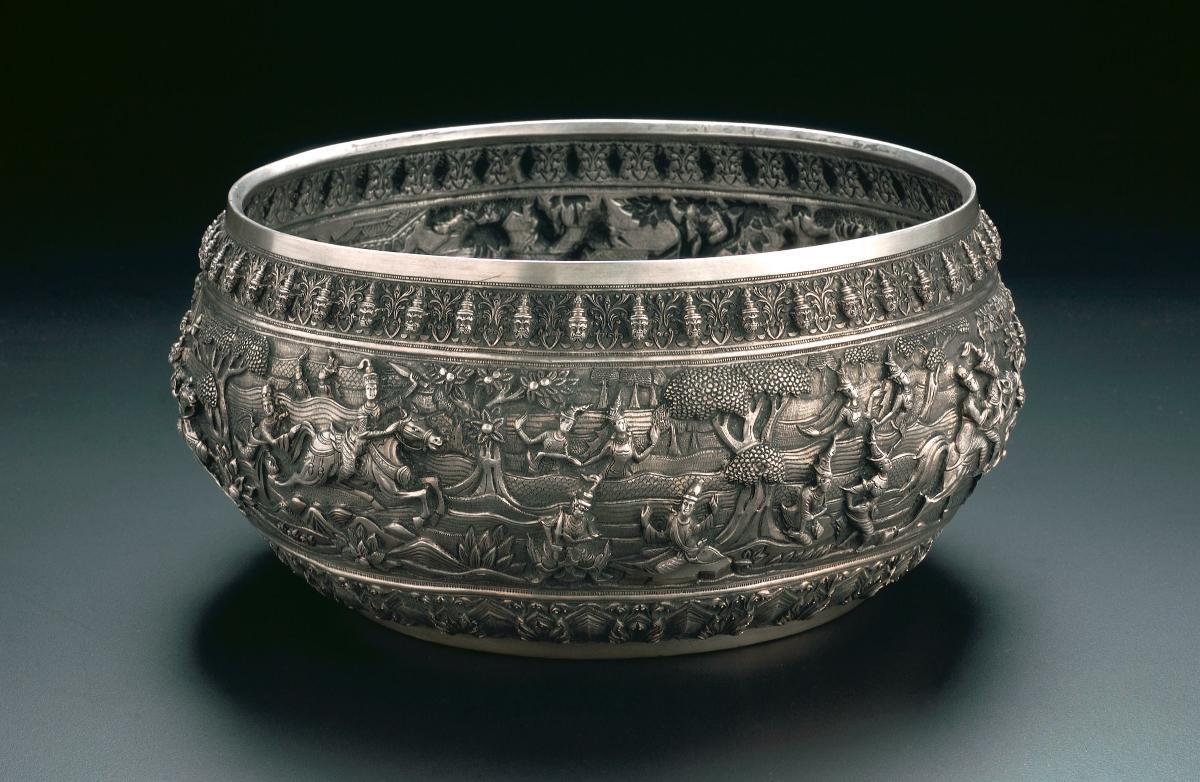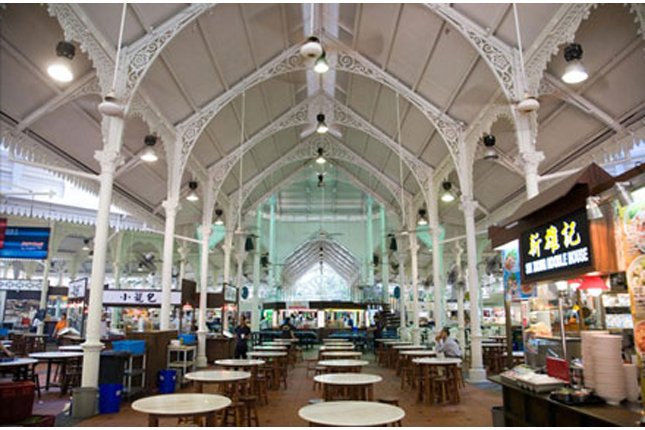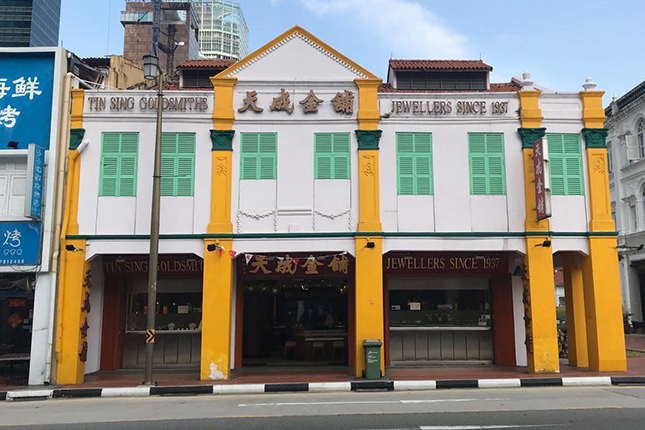This pair of paduka sandals has been fashioned from sheet and cast silver, as well as sheet and cast gold which has been clad over a carved wooden base.They are modelled after the padukas worn by sadhus and other types of mendicants and holy men in India, but would have been worn by royalty or similar.They stand on high, flared platforms which have been scalloped. The exteriors have been clad in hammered sheet silver which has been pinned to the wooden bases with silver pins.The upper soles also are clad in silver and this has been finely engraved with fine bands of geometric scrolls and other similar patterns.The sides of the soles have been decorated with a double row of small, suspended bells.The toe-knobs have been topped with sheet gold and a circular row of suspended gold bells – providing a pleasing contrast with the silver but also suggesting the high status of the wearer.The undersides have been painted red, other than those parts which come into contact with the floor or ground.A related pair also with gold coverings over the to-knobs and attributed to 18th century Jaipur is illustrated in Jain-Neubauer (2000, p. 6). Another pair, but without gold, and attributed to the early 19th century but which were acquired in Zanzibar, is illustrated on p. 88 of the same book.It is possible that the pair here also were acquired in Zanzibar, which is on the east coast of Africa, although they can still be considered Indian in origin. The area had close trading links with west India and also was home to many Indians and Parsees who had come from India. The undersides also retain old collection labels which attribute these shoes to ‘Africa’ rather than to India. According to Dale (1920, p. 19), there many Indians, both Hindu and Moslem, living in Zanzibar by the early 20th century but they had been on the island for ‘centuries.’ They tended to have come from Bombay, Kutch and Gujarat. There was also a small population of Indians from Goa who were Christian.There pair have ample signs or age and use. There are some losses to the multitude of silver bells that adorn the sides of the soles, and part of the gold covering to one of the toe-knobs has some crushing to its edge and to some of the gold bells. But overall, these are fine and rare examples.






